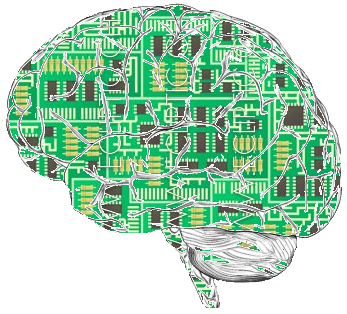

We live in a world of facial recognition, genome sequencing, and automatic fraud detection. You can talk to your phone out loud have it translate your words into any language you like. Your car can drive itself (almost …).
That is to say – the machines are getting clever. Very clever indeed. Tasks previously thought to require human intelligence and intervention are being automated at a spellbinding pace. Businesses, governments and academic institutions around the world are seeing operations turned on their head with better algorithms, more computing power and more data. Whether you think that’s exciting or terrifying, what isn’t up for discussion is that it’s inevitable.
For those legal researchers among us, you could be forgiven for thinking that none of this has anything to do with you. Forgiven because, until now, you would be right. Legal research platforms haven’t really changed in the past ten years – vast libraries of documents, a few clunky search forms and a handful of filtering options. Consequently, how people use them hasn’t changed much either – run a search (or ten), hunt around, and if you’re lucky enough to find what you’re looking for, print it off and go home to read it later.
Until now, legal research has been late to the party, but it’s finally making an entrance, and the implications for lawyers will be profound.
For a “dumb” computer system, a document (legal or otherwise) isn’t much more than a bag of words. If the system can render it on a web page, it’s done its job. An “intelligent” system does more. It understands the content and the semantic relationships within the data i.e. it knows that cases are argued by barristers on behalf of people and corporations, are decided by judges, and heard in courts. It knows that some courts are superior to others, and can hear appeals and overturn decisions. If it’s really clever, it will understand the concepts involved, the language used and the reasoning applied.
This is the kind of system that will transform the legal industry. Learning algorithms will be able to digest materials and offer predictions of outcomes, damages and recommendations. The smartest systems will understand questions in plain English, and return answers with supporting authorities.
We’re not there yet, but we are already seeing a handful of research platform providers working harder to create more intelligent tools. In the US, a legal tech start-up called Ravel Law is presenting search results in a visual graph, with varying circle sizes indicating the relative importance of cases. It gives immediate intuition on where to start your research.
At Justis we are working to bring legal research into the 21st Century with machine learning, language processing and data visualization in our latest product – JustisOne. We’ve developed algorithms that identify the most important passages in legal authorities, and built interactive visual tools that enable lawyers to explore entire families of related cases. You can discover in seconds what previously would have taken hours or days to do.
We’ve seen well over ten years of relentless innovation on the wider web in search and information science. Artificial intelligence and big data analysis are turning every field on its head. In comparison, the legal research industry as a whole has been languishing. Which is strange, when you think that that legal precedent, and the inherent citation network between cases and legislation, is so perfect for technological exploitation. The patterns we’re uncovering in the data are incredible.
We’ve been in the legal content dissemination business for thirty years, but our model has changed. We’ve evolved from a publishing company to a technology company. We realised that that we had to go beyond document delivery, and build tools on top of our content that allow lawyers to analyse, interpret and navigate the law.
We’ve spent decades gathering legal materials – often from hard copy. We’ve been to courts, libraries and basements all over the world to get our hands on everything we can find. The result is a dataset to mine that would take anyone else many years to accumulate. We also have a small army of legal editors that validate our technology at every step.
Intelligent, cloud-based machines working in tandem with human experts is the new model. If you’re too automated, you may not be accurate, and if you’re too human, you’re probably not scalable. We think we’ve landed on the perfect mix, and the end result is a product that reduces the time spent doing legal research dramatically, but in a way that can be trusted.
Building more intelligent tools isn’t just an engineering problem – genuinely useful products require an intimate understanding of the problem space, and design efforts to produce solutions that are as intuitive as they are clever.
Nonetheless, the endeavour begins with the understanding the data and discovering what is possible. Increasingly, we are getting a sense that what is possible will be transformative, and companies like Justis and Ravel are leading the way, having already applied data science methodologies to the law and brought products to market.
These products can’t do all of your legal research for you – but some would say it’s only a matter of time.
Robin Chesterman is Product Manager at Justis. He studied law at Bristol University before joining Justis as a developer in 2009. His main area of interest is how data science methodologies can be applied to legal content to facilitate better research. Email RobinChesterman@justis.com. Twitter @RobinChesterman.
Image CC by Gengiskanhg.